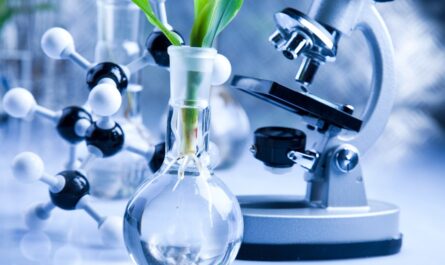Bioplastics are a type of plastics that are biodegradable or made from renewable feedstocks such as vegetable fats and oils. With growing concerns about environmental pollution caused by plastic waste, bioplastics have emerged as a more sustainable alternative to conventional plastics.
Types of Bioplastics
Bioplastics can be broadly classified into three main categories based on their origin and properties:
Biodegradable plastics
These are plastics that can be broken down by microorganisms such as bacteria and fungi. They include polylactic acid (PLA), polyhydroxyalkanoates (PHA), Polybutylene succinate (PBS), Polycaprolactone (PCL) etc. PLA is derived from corn starch and sugarcane and is commonly used in packaging, cups and food containers. PHA is produced naturally by bacterial fermentation of sugar or lipids.
Bio-based plastics
Also known as bioplastics, these plastics are produced from renewable biomass sources such as vegetable fats and oils instead of fossil fuels. However, they may not be necessarily biodegradable. Common examples include biobased polyethylene (PE), bio-based polyethylene terephthalate (PET) and Bio-Polypropylene (Bio-PP).
Biodegradable and bio-based hybrids
These hybrid plastics combine biomass-derived monomers with petrochemical-derived monomers to achieve optimum performance characteristics. Some examples are polylactic acid (PLA) made from lactic acid, a byproduct of starch fermentation process.
Advantages of Bioplastics
Some of the key advantages of bioplastics over traditional plastics include:
Sustainable: Bioplastics are produced from renewable biomass sources such as vegetable oils, reducing dependence on fossil fuels.
Biodegradable: Biodegradable plastics can decompose completely within a few months without leaving behind microplastic pollutants in the environment.
Compostable: Products made from biodegradable plastics can be composted at an industrial composting facility along with food and yard wastes.
Reduce carbon footprint: Life cycle assessment studies have found bioplastics to have lower greenhouse gas emissions than traditional plastics.
Extended producer responsibility: Use of bioplastics helps companies meet sustainability targets and the extended producer responsibility norms.
Challenges to Adoption of Bioplastics
However, wide adoption of bioplastics faces some challenges:
High costs: Production costs of bioplastics are 2-5 times than traditional plastics mainly due to small production capacities and costs of sourcing biomass.
Inadequate end-of-life infrastructure: Absence of separate collection system and composting facilities hinders bioplastic waste management.
Properties trade-off: Compared to fossil-fuel based plastics, bioplastics generally show inferior properties like lower heat resistance, mechanical strength, barrier properties.
Perception issues: Many consumers perceive bioplastics as non-durable or expensive. More awareness is needed regarding their environmental benefits.
Standardization: Lack of standards and certifications for compostability claims and testing methods cause confusion among buyers.
Transition will take time: Fossil fuel based plastics have entrenched economies of scale and switching will be gradual with timebound EPR policies.
To address challenges and facilitate mass adoption, governments and companies are taking initiatives:
Policy support: Favourable policies like banning select single use plastics, EPR implementation, tax incentives will accelerate bioplastics market.
Innovation: Research focus on improving properties, lowering costs, commercializing new sustainable polymers at scale from agricultural residues.
Partnerships: Collaborations among value chain players from biopolymer makers to compost facilities will strengthen end-to-end bioplastic ecosystem.
Awareness: Media, events to educate public, industries about proper disposal of bioplastics and importance of circular bioeconomy.
Adoption by MNCs: Introduction of bioplastic packaging, cutlery by leading FMCG, QSR chains will boost demand, drive scale.
With consistent efforts towards addressing current barriers through technology innovations, investments and policy drivers, bioplastics are poised play a key role in transition towards a sustainable plastic economy for future generations. Though a long journey lies ahead, the first steps taken are promising.




